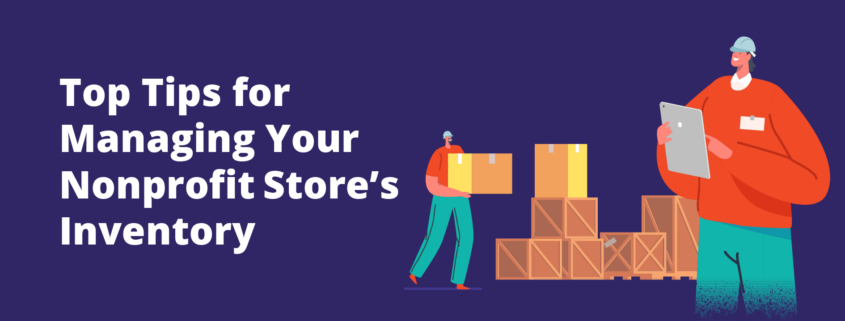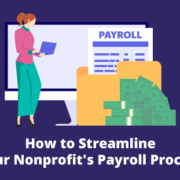Nonprofits that Sell Products or Services: 4 Considerations
Sustainable nonprofits have diverse revenue streams, from donations to grants to sales. However, while nonprofits that sell products and services can make more than enough revenue to sustain themselves, undertaking commercial affairs comes with several considerations.
Nonprofits that rely heavily on product or service sales, like thrift stores, museums, and educational institutions, can experience the benefits of running a business and maintaining nonprofit status. To explain how, this guide will cover four considerations these types of nonprofits should keep in mind.
1. Audience Demand
A successful business sells the products and services its customers want. For many businesses, this involves assessing market needs and designing products or services they feel there is a demand for. However, many nonprofits already have a possible product or service and must find your audience.
To assess and capture an audience, be sure to:
- Conduct market research. Before pushing a product to market, you need to understand who is most likely to buy it, how many people are likely to buy it, and at what price point they will buy it. Look for nonprofits with similar sales offerings and assess their business models. Research audience demographics, delivery methods, and value propositions.
- Establish your value proposition. Getting Attention’s guide to nonprofit communications outlines three key aspects of a value proposition: audience needs, benefits received, and brand differentiators. In other words, to promote your nonprofit’s products or services, you must explain how they meet your audience’s needs, what the audience gets from a purchase, and how your offerings stand out from your competitors.
- Craft relevant marketing materials. Marketing is the art of presenting the right message to the right audience in the right location. For a nonprofit with a brick-and-mortar location, like a thrift store, this might be a radio spot, posters, or mailed flyers. In contrast, a nonprofit specializing in online sales might focus on its web presence and social media outreach.
Expect to continually reconsider and reassess audience preferences. After launching your product or service offerings, gather data by surveying customers and requesting reviews. This will allow you to glean insights about your business model and audience.
2. Inventory Management
Once you know what products your audience wants, you must order, stock, and manage them. Many nonprofit stores follow the reuse model, where inventory comes from various sources, including donations. This means the exact items you have at any time may be unpredictable, if not outright chaotic.
You can counter this by employing robust inventory management tools. ThriftCart recommends looking for the following features in inventory management software:
- Real-time inventory tracking. Ensure you always know what’s in stock and what’s out of stock with real-time inventory updates. That way, you’ll always know what items need to be restocked to meet customer needs.
- Automated pickup and dropoff scheduling. If your nonprofit accepts donations to stock products, your inventory management tool can help supporters schedule delivery windows. This makes gathering stock simple for everyone.
- Customer reward options. Along with managing your inventory, many point of sale (POS) platforms also provide features that incentivize growth, such as customer reward and loyalty tools. Track customer purchases to offer them perks, send personalized marketing messages, and create custom discounts for upcoming marketing campaigns.
Inventory and point of sale systems are often highly specialized, so they work with a platform that fits your nonprofit’s sales model. For instance, a thrift store would likely use a different inventory management tool than a museum gift shop.
3. Marketing
To earn sales, your nonprofit needs to inform prospective customers of your offerings. Previously, we touched on the main components of marketing: creating a message for a target audience and displaying it in locations they are likely to see. Let’s break down each of these aspects a bit further:
- Audience. Who is your nonprofit targeting? The research you did when assessing audience demand for your offerings should be used here. Use your data to get as specific as possible regarding your ideal audience’s demographic information, location, values, buying habits, and communication preferences. For example, a used book store might have several audiences, including lower-income individuals looking for deals and book lovers looking for unique or vintage tomes.
- Message. Based on the audiences you identify, what messages are likely to resonate with them? Consider your audience’s goals and values. Do they want convenience, a good deal, or unique offerings? Based on your prior analysis, create messages that align with your audience’s preferences.
- Distribution. Ensure your marketing messages are in locations where your audience is likely to look. This is essential for certain marketing strategies, like search engine optimization (SEO) for nonprofits. SEO relies on understanding what types of keywords your audience is likely to search for and creating content that targets those keywords. Conversely, to court a local audience, you instead invest heavily in distributing your message through traditional channels, like newspaper and radio.
After any marketing push, track the results to assess whether it had the desired impact. You may even discover new insights about your audience, such as by attracting a demographic you weren’t specifically targeting or learning that one communication channel has a higher conversion rate than expected.
4. Financial Reporting
To sell products and maintain nonprofit status, charitable organizations must be extra conscious of their finances and reporting requirements. For U.S.-based nonprofits, you must follow a few guidelines:
- Products must be related to your mission. All commercial ventures must be related to your nonprofit’s mission. For instance, an environmental nonprofit selling t-shirts that promote awareness of endangered species would be considered mission-related. If it’s determined your commercial offerings are not mission-related, your nonprofit will need to track Unrelated Business Income Tax (UBIT), and if you make over $1,000 in non-mission-related sales, file Form 990-T.
- Donations are reported. Nonprofits that accept in-kind donations to fuel their inventory (like thrift or reuse stores) will need to report these contributions. This also applies to other types of in-kind donations, such as prizes you might solicit for a charity auction. And be sure to provide supporters with donation receipts for items that are valued at $250 or more to comply with IRS guidelines.
- Revenue is invested back into the nonprofit. Nonprofits can and often do make a profit through sales of products or services. The key is that the extra revenue must be spent on mission-related activities. For instance, a thrift store might use its profits to buy items in bulk from wholesalers or restore vintage items.
If you need assistance properly managing your organization’s finances, consider working with an external accounting firm that specializes in nonprofits. These consultants will understand the unique challenges charitable organizations face and be able to help your nonprofit navigate potentially confusing reporting requirements.
Products and services bring in vital revenue for your nonprofit. Ensure you conduct your commercial ventures transparently, in an organized manner, and with an eye to your audience’s needs. To get started, consider your software needs and employ the right tools for managing the commerce side of your nonprofit.










